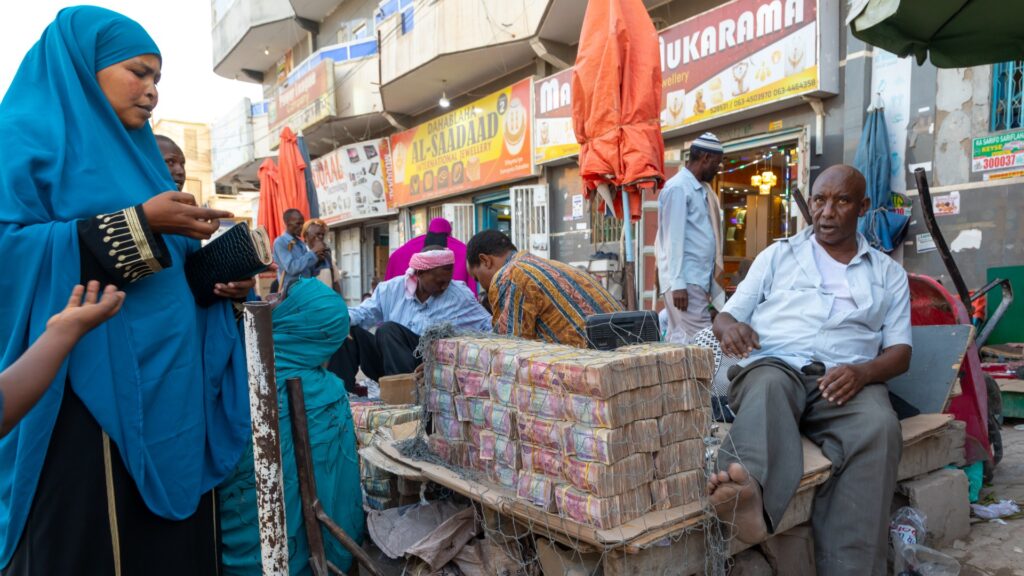Somalia’s economy faces substantial obstacles owing to political uncertainty, security concerns, and environmental disruptions. Nevertheless, recent initiatives for economic improvement and international support have shown promising progress.
GDP Growth and Economic Performance
Recent Growth Trends
In 2023, Somalia’s GDP growth was estimated to be 4.2%, representing a recovery from severe drought between 2020 and 2023. Favorable rain boosted agricultural production and exports, which reduced food insecurity and supported private consumption. Despite these improvements, the economy remains heavily reliant on imports, leading to a trade deficit of 59% of GDP financed mainly by remittances and official grants.

Poverty and Employment
Poverty Levels
Despite economic improvement, poverty remains a critical issue in Somalia. In 2022, approximately 55% of the population will live below the national poverty line. Poverty is more prevalent among the nomadic population, although urban areas host the majority of the poor because of high urbanization rates.
Debt Reduction and Financial Stability
HIPC Initiative Completion
A notable accomplishment for Somalia was attaining the Heavily Indebted Poor Countries (HIPC) Initiative completion point in December 2023. This milestone resulted in a significant reduction in Somalia’s external debt from 64% of its GDP in 2018 to less than 6% by the end of 2023. The debt relief provided by the HIPC Initiative not only improved Somalia’s debt sustainability, but also unlocked access to crucial financial resources for economic growth.
IMF Extended Credit Facility
The IMF’s Extended Credit Facility (ECF) program has played a pivotal role in Somalia’s economic recovery. The successful completion of the sixth and final review of the ECF program paved the way for a new three-year ECF arrangement starting in January 2024 to support Somalia’s post-HIPC economic agenda.
Structural Reforms and Resilience Building
Economic Reforms
Somalia has made notable progress in structural reforms that are essential for long-term economic stability and growth. The country has implemented 13 of 14 HIPC completion points that trigger and maintain sound macroeconomic management. These reforms aim to improve fiscal management, resilience, and private sector growth.
Building Resilience
Somalia’s economy faces frequent shocks including severe droughts, floods, locust infestations, and global price volatility. Building resilience to these shocks is a priority of the Somali government and its international partners. Planned investments in energy, ports, education, and health, along with the growing use of digital technologies, offer opportunities to enhance economic resilience and support job creation.
Conclusion
Somalia’s economy shows signs of recovery with support from substantial debt relief, structural reforms, and international aid. Nevertheless, the country still faces obstacles such as high poverty levels, low workforce participation, and susceptibility to environmental crises. Ongoing initiatives are necessary to enhance economic stability, strengthen governance, and promote inclusive growth to ensure sustainable development.
References
1. “Somalia Overview: Development news, research, data.” [World Bank] (https://www.worldbank.org/en/country/somalia/overview).
2. “Somalia Gross Domestic Product Report 2022.” [NBS Somalia] (https://nbs.gov.so/wp-content/uploads/2023/07/Somalia-Gross-Domestic-Product-Report-2022.pdf).
3. “Somali Economic Outlook.” [MoPIED](https://mop.gov.so/wp-content/uploads/2023/03/SOMALI-ECONOMIC-OUTLOOK-English.pdf).
4. “IMF Staff Completes Staff-Level Agreement on the First Review of the Extended Credit Facility Arrangement for Somalia.” [IMF](https://www.imf.org/en/News/Articles/2023/03/08/pr2377-somalia-imf-staff-completes-staff-level-agreement-on-first-review-of-ecf-arrangement).
